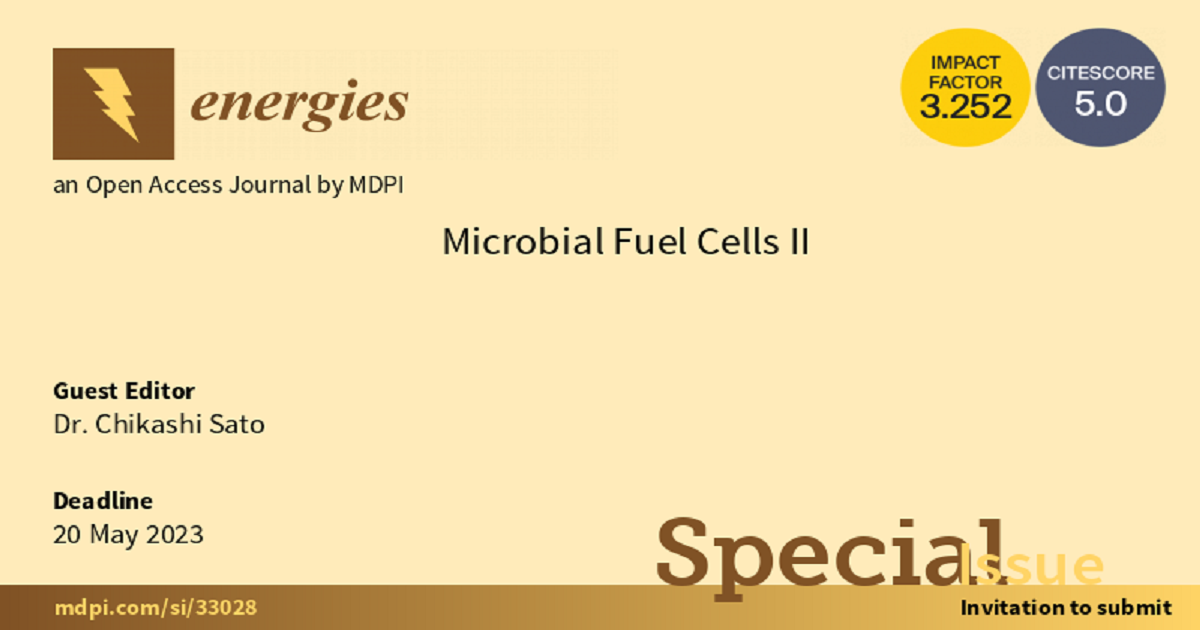Microbial Fuel Cells II
A special issue of Energies (ISSN 1996-1073). This special issue belongs to the section "A4: Bio-Energy".
Deadline for manuscript submissions: closed (20 May 2023) | Viewed by 14792

Special Issue Editor
Interests: energy recovery; microbial fuel cell; advanced oxidation process; pharmaceuticals and personal care products
Special Issues, Collections and Topics in MDPI journals
Special Issue Information
Dear Colleagues,
A microbial fuel cell (MFC) generates electricity with the help of electrochemically active bacteria, degrading abundant, renewable organic matter, which can be environmental pollutants present in wastewater. Thus, MFC can be one of the sustainable energy generation systems of the future. Furthermore, MFC technology has evolved into other viable applications, such as removal of toxic substances, nutrient recovery, environmental quality monitoring sensors, and implantable health devices.
Since the discovery of microbial electrical energy over a century ago, MFC technology has made significant advances in energy generation and recovery. This Special Issue will focus on recent revolutionary MFC technologies in terms of biological and non-biological catalysts, construction materials, design, operation, and applications.
We look forward to hearing from you soon.
Dr. Chikashi Sato
Guest Editor
Manuscript Submission Information
Manuscripts should be submitted online at www.mdpi.com by registering and logging in to this website. Once you are registered, click here to go to the submission form. Manuscripts can be submitted until the deadline. All submissions that pass pre-check are peer-reviewed. Accepted papers will be published continuously in the journal (as soon as accepted) and will be listed together on the special issue website. Research articles, review articles as well as short communications are invited. For planned papers, a title and short abstract (about 100 words) can be sent to the Editorial Office for announcement on this website.
Submitted manuscripts should not have been published previously, nor be under consideration for publication elsewhere (except conference proceedings papers). All manuscripts are thoroughly refereed through a single-blind peer-review process. A guide for authors and other relevant information for submission of manuscripts is available on the Instructions for Authors page. Energies is an international peer-reviewed open access semimonthly journal published by MDPI.
Please visit the Instructions for Authors page before submitting a manuscript. The Article Processing Charge (APC) for publication in this open access journal is 2600 CHF (Swiss Francs). Submitted papers should be well formatted and use good English. Authors may use MDPI's English editing service prior to publication or during author revisions.
Keywords
- microbial fuel cell
- bioelectricity generation
- resource recovery
- viable applications





